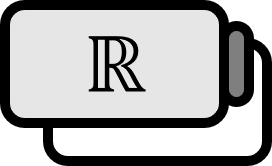Series, Infinite Series
Definition1
Let’s assume a sequence $\left\{ a_{n} \right\}$ is given. Then, let’s define the following notation.
$$ \sum \limits_{n=p}^{q} a_{n} = a_{p} + a_{p+1} + \cdots + a_{q}\quad (p \le q) $$
Define the partial sum $s_{n}$ of $\left\{ a_{n} \right\}$ as follows.
$$ s_{n} = \sum \limits_{k=1}^{n} a_{k} $$
Then, we can think of a sequence $\left\{ s_{n} \right\}$ of these $s_{n}$. The limit of sequence $\left\{ s_{n} \right\}$ is called the infinite series or simply, the series of $\left\{ a_{n} \right\}$, and is denoted as follows.
$$ \sum \limits_{n = 1}^{\infty} a_{n} = \lim \limits_{n \to \infty} s_{n} = \lim\limits_{n \to \infty}\sum \limits_{k=1}^{n} a_{k} $$
If $\left\{ s_{n} \right\}$ converges to $s$, it is denoted as follows and the series is said to converge.
$$ \sum \limits_{n = 1}^{\infty} a_{n} = s $$
If $\left\{ s_{n} \right\}$ does not converge, the series is said to diverge. In the case of divergence,
If for every $M \in \mathbb{R}$, there exists $N \in \mathbb{N}$ such that $n \ge N \implies s_{n} > M$ is satisfied, $$ \sum \limits_{n = 1}^{\infty} a_{n} = \infty $$ it is denoted as follows.
If for every $M \in \mathbb{R}$, there exists $N \in \mathbb{N}$ such that $n \ge N \implies s_{n} < M$ is satisfied, $$ \sum \limits_{n = 1}^{\infty} a_{n} = -\infty $$ it is denoted as follows.
Explanation
A series is a rigorous mathematical definition of the ambiguous concept of adding up infinitely many terms. It is also denoted simply as $\sum a_{n}$.
Walter Rudin, Principles of Mathmatical Analysis (3rd Edition, 1976), p59 ↩︎
